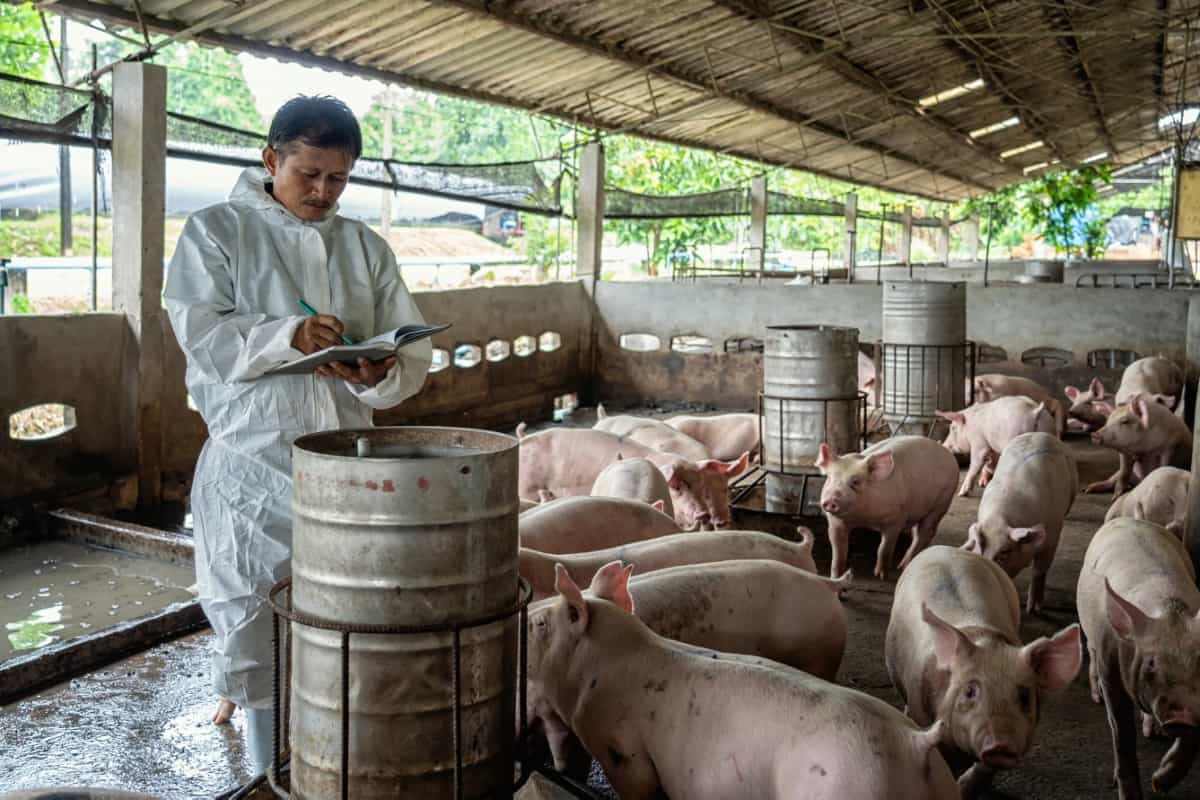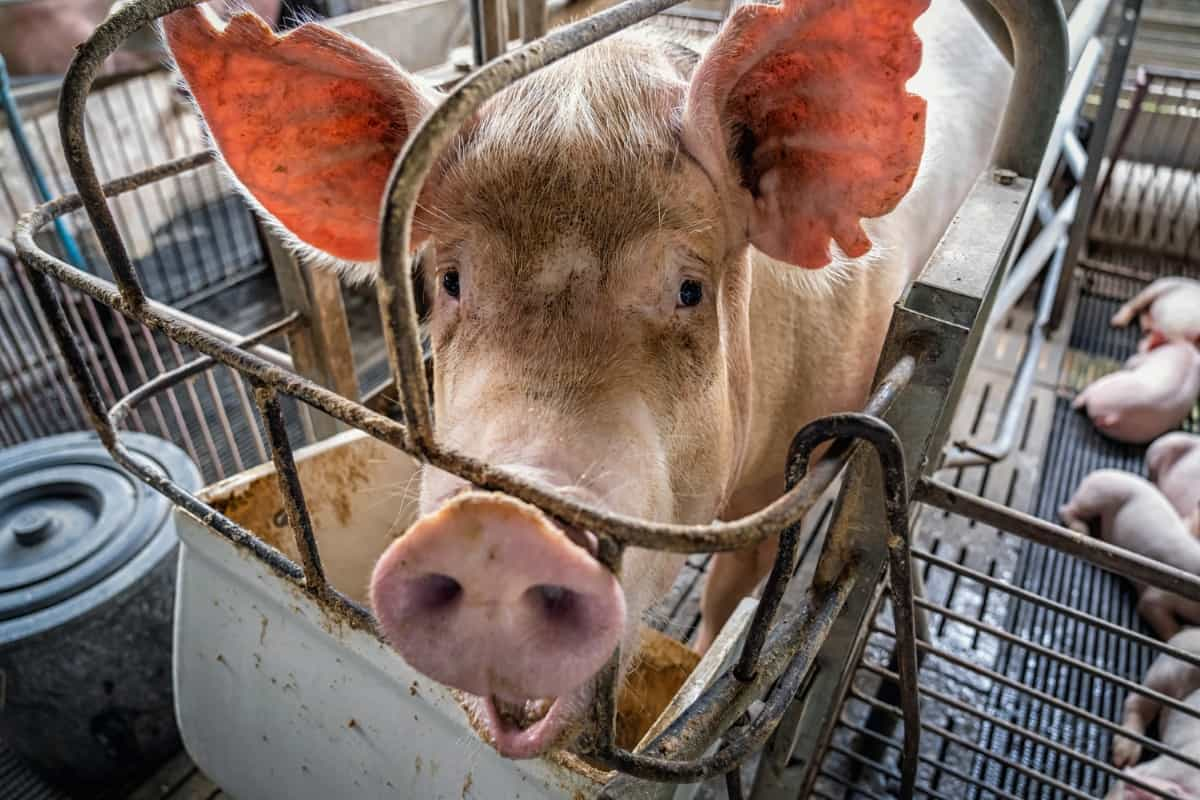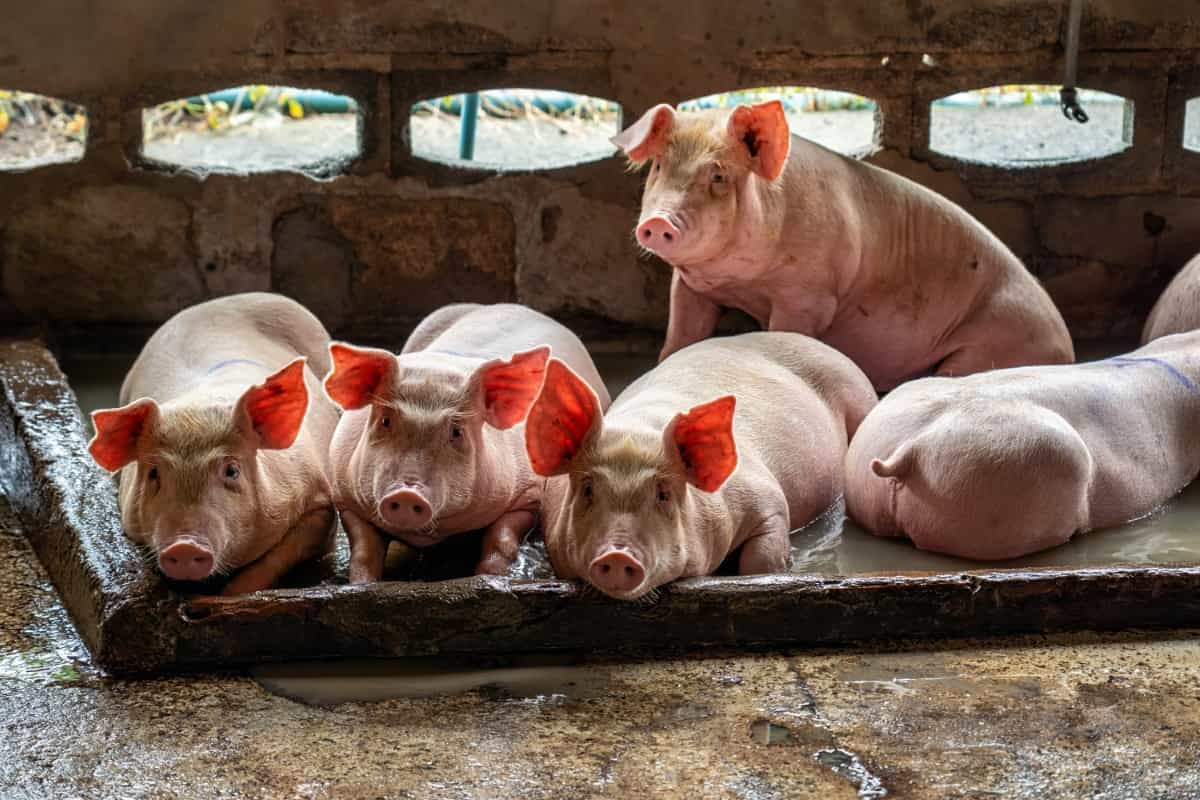Due to the numerous health and environmental challenges disrupting the hog industry, hog farmers cannot afford to let the summer heat stifle their profits. Heat stress can seriously affect pig performance, particularly in breeding herds and finisher hogs. Animals are often severely stressed by heat and wide changes in temperature, resulting in diminished performance, health problems, and, eventually, economic losses.

We can reduce the animal’s effective temperature by increasing the body’s heat transfer rate and reducing the amount of heat transferred into the animal from its surroundings. Even though the animal should be under heat stress, its heat balance makes it feel cooler. As a result, the animal can continue eating and producing.
Keep Your Hogs Heat-Stress Free
What Does Heat Stress Do to Hogs?
Heat stress reduces a hog’s feed intake in the short term. When the hog cannot lose excess heat, it is less likely to want food and more likely to want water, which reduces its growth rate. Additionally, sows will have smaller litters and lower conception rates during the warmer months due to reduced fertility.
The long-term effects of heat stress can increase intestinal permeability, resulting in leaky gut syndrome. When a hog gets too hot, its circulatory system can redistribute blood to its skin to try and cool it off. As a result, the digestive tract receives less blood flow. During digestion, proteins can break down the intestine’s lining, allowing bacteria and pathogens to enter the animal.
Tips to Keep Your Hogs Heat-stress Free
Maintaining Nutrition Adequately
The amount of heat generated by digestion will be reduced when pigs reduce voluntary feed consumption at temperatures above their ideal range. As a result, diets should be reformulated in the summer to be more nutrient-dense, ensuring that nutrient needs (amount/day) are still met.
Caloric density will increase with higher fat levels, such as beef tallow, choice of white grease, and vegetable oil, while digestion will produce less heat. Dietary fat is typically added at a rate of two to six percent. In hot weather, fibrous ingredients like soybean hulls, wheat midds, alfalfa, etc., should not be fed since they have a lower caloric density and release more heat during digestion.
Provide Plenty of Water
Especially when temperatures rise, water is essential. Cool water reduces the pig’s internal body temperature during heat stress and replaces the water lost through respiration. Make sure market hogs have plenty of access to water. Each market hog pen should have at least two water sources and one drinker space for every 15 hogs. Ensure that drinkers receive adequate water flow daily. The water flow rate should be 2-3 cups per minute for growing/finishing pigs.
Check Your Ventilation
Among the tools available to producers, ventilation is the most effective. A good rule of thumb is to move as much air as possible. As a result of air movement, the hot, humid air inside the barn is replaced with air from outside. Pigs benefit from this, even in extreme weather conditions. Using circulation fans in a barn to move air throughout can be beneficial, removing heat from the hogs. It is recommended that circulating fans be used in addition to proper ventilation rather than in place of it.
Installing Sprinklers in Pens
Pigs wallow in the mud in natural conditions outdoors as a means of cooling themselves. It is not the mud that provides significant cooling, but rather an evaporative cooling that occurs as the mud dries and provides a protective barrier against the sun. Water sprinklers and drip coolers can also provide effective evaporative cooling in confinement systems. In group pens, spraying water every 20 to 30 minutes allows moisture to evaporate from the pig’s skin before wetting and restarting cooling. Continuously running waterers is less effective.
In case you missed it: How to Start Pig/Hog/Swine Farming in Illinois: A Step-By-Step Production Guide

Fogging is most effective when larger water droplets are used since it increases air humidity and indirectly reduces evaporative loss of heat. Direct evaporative cooling can also be achieved by dripping water on the hog’s necks and shoulders of sows in gestation or farrowing stalls, combined with air movement. Before water reaches the flooring, drips should be positioned so that almost all or all water evaporates.
Using Cool Cells
Cool cells are more common in sow units, but they can also be found in finishing barns. As a result of the evaporative cooling of the water contained in the cool cell, the air temperature is reduced. Cool air enters the barn through the cool cell, which pulls hot outdoor air. These devices can lower the air temperature by 20°C or more.
Providing Adequate Floor space
When possible, it is recommended to increase the minimum floor space allowed per pig during heat stress. Increasing floor space improves each pig’s ability to dissipate heat, which is especially critical for larger pigs more susceptible to high temperatures.
Emergency Ventilation Equipment
It is essential to have emergency ventilation equipment in proper working order if you want to reduce the risk of heat stress. Ensure your alarms, backup generators, and emergency curtain drop are working properly regularly.
Adequate Insulation in Pens
A properly designed and maintained building should have adequate insulation to prevent excessive heat loss during the winter and minimize solar heat buildup during the summer. When buildings are initially designed and built with adequate insulation levels, their effectiveness can be reduced later on. At least annually, you should evaluate the insulation material’s insulating value, or R-value, as age and rodent infestation can greatly reduce it.
Providing Shade for Outdoor Raering Hogs
Shade must be provided naturally by trees or structures built to provide relief from the sun for pigs raised outdoors. Shade provides relief by blocking a significant proportion of the sun’s radiant heat load. Uninsulated aluminum or bright galvanized steel are excellent roofing materials for artificial sources of shade. As a result of the reflective surface, the sun’s radiant rays are deflected.
Separate the Hot Stressed Hogs and Monitor Stress Levels
Pigs that are overheated should be kept away from other pigs. Cool but not ice-cold water should be used to wet their skin. Allow them to dry. Repetition is necessary. The pigs will seek cool places to lie when it gets hot and keep away from each other when it gets hot. Additionally, they move less. Look for stressed breathing patterns or panting as a first sign of heat stress. An excessive number of breaths per minute indicates stress. You may need to contact a veterinarian.
In case you missed it: How to Start Pork/Hog/Pig Farming in the USA: Business Plan and Step-By-Step Guide for Beginners

Conclusion
Pigs can be difficult to manage during seasonal changes. Combining these tips with good husbandry can minimize the heat stress effect on your pigs and herd. For specific information about dealing with heat stress in your herd, contact your local veterinarian.
- Feed Your Flock for Less: Top 10 Tips to Save on Chicken Feed
- Ultimate Guide to Ossabaw Island Hog: Breeding, Raising, Diet, and Care
- Hatching Answers: The Top 10 Reasons Your Chickens Aren’t Laying Eggs
- Eggs and Economics: Breaking Down the Cost of Raising Backyard Chickens
- Defend Your Greens: Proven Methods to Keep Iguanas Out of Your Garden
- Ultimate Guide to Cinnamon Queen Chicken: A Comprehensive Guide for Beginners
- Ultimate Guide to California Tan Chicken: Breeding, Raising, Diet, Egg-Production and Care
- Ultimate Guide to Marsh Daisy Chicken: Breeding, Raising, Diet, and Care
- 10 Types of Chicken Farming Businesses You Can Start for Profits